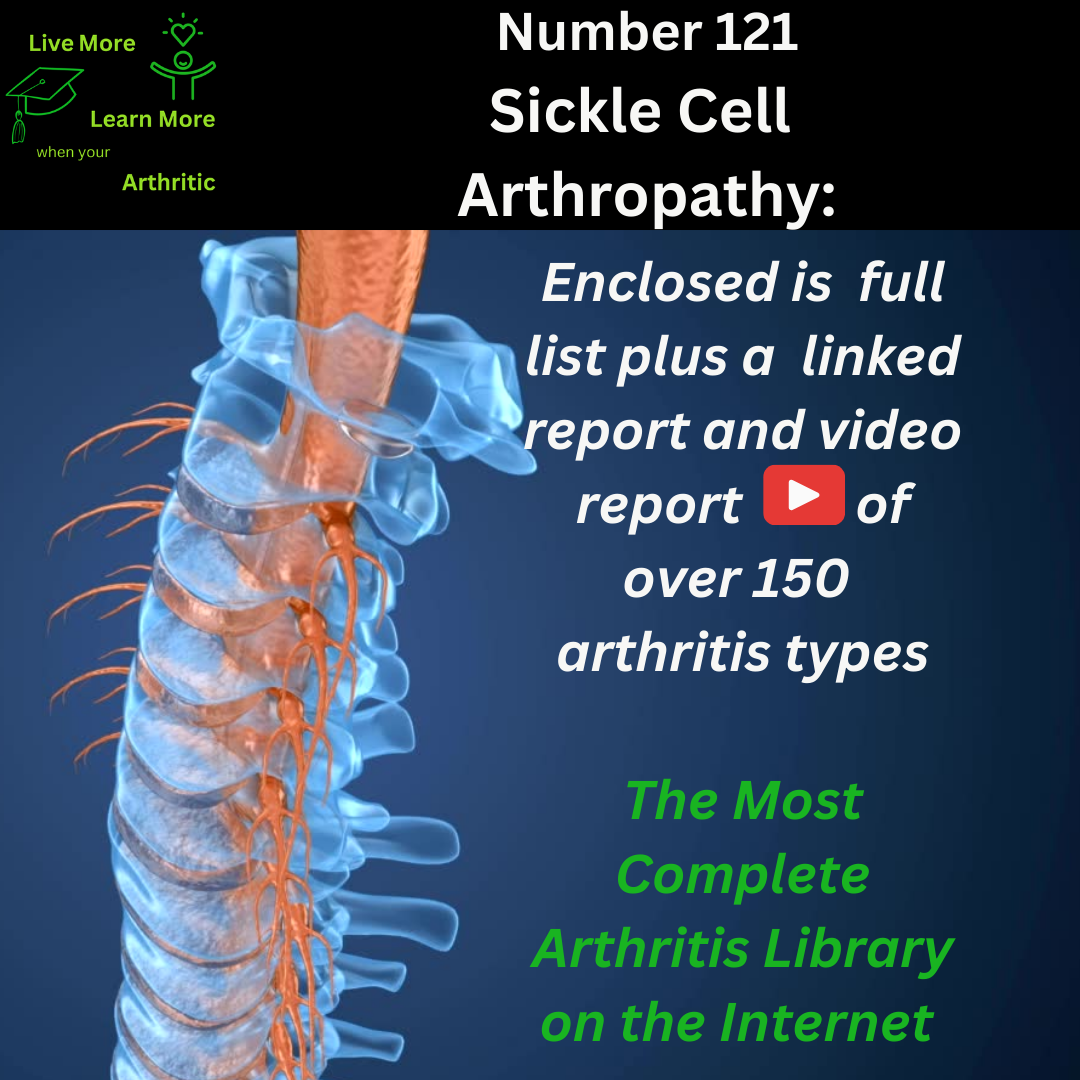
Sickle Cell Arthropathy: Number 121 of around 150 types of Arthritis
Unveiling Sickle Cell Arthropathy: Navigating a Unique Challenge
Sickle Cell Arthropathy is a lesser-known complication of sickle cell disease that can significantly impact joints and overall quality of life. Understanding the intricacies of this condition requires a deep dive into its manifestations, triggers, and potential pathways toward a better quality of life.
 Affected Joints and Manifestations
Affected Joints and Manifestations
When it comes to Sickle Cell Arthropathy, certain joints bear the brunt of its effects more than others. Typically, weight-bearing joints such as the hips, knees, and ankles are most commonly affected. This can lead to chronic pain, swelling, and restricted movement in these areas. Over time, if left unchecked, the condition can progress and involve other joints, albeit less frequently.
Exploring the Possibilities of Remission
Remission from Sickle Cell Arthropathy can be challenging to achieve, given its underlying cause and chronic nature. However, with comprehensive management strategies including pain management, physical therapy, and disease-modifying therapies, individuals may experience periods of reduced symptoms and improved joint function. The goal is to minimize the impact of the disease on daily life and maximize mobility.
Understanding the Disease and Its Triggers
Sickle Cell Arthropathy stems from sickle cell disease, a genetic blood disorder characterized by abnormal hemoglobin that causes red blood cells to become rigid and “sickle” shaped. These sickle cells can clog blood vessels, leading to episodes of pain and tissue damage, including in the joints. The trigger for arthropathy is often recurrent vaso-occlusive crises, where sickled red blood cells block blood flow to joints, causing ischemia and subsequent damage.
Symptoms and Impact on Mobility
The symptoms of Sickle Cell Arthropathy are primarily joint-related, including pain, swelling, and stiffness. Individuals may experience limited range of motion, difficulty walking or bearing weight on affected joints, and chronic discomfort. Over time, joint damage can progress, affecting mobility and overall quality of life.
Onset and Lifespan Considerations
The onset of Sickle Cell Arthropathy is typically seen in individuals with sickle cell disease, often presenting in late childhood or early adulthood. While sickle cell disease itself can reduce lifespan due to complications like organ damage and stroke, arthropathy adds an additional layer of challenges. However, with advancements in medical care and management, many individuals with sickle cell disease can live longer, fulfilling lives.
Autoimmune Components and Risk Factors
Sickle Cell Arthropathy is not considered an autoimmune form of arthritis but rather a complication of sickle cell disease. Risk factors for developing arthropathy include the severity and frequency of vaso-occlusive crises, genetic factors, and individual variations in disease manifestations.
Complications and Quality of Life
The complications of Sickle Cell Arthropathy extend beyond joint pain and limited mobility. Chronic inflammation within the joints can lead to progressive joint damage, osteonecrosis (bone death), and ultimately joint deformities. This can significantly impact an individual’s ability to perform daily activities and contribute to a lower quality of life.
Proactive Approaches and Quality of Life Enhancement
Achieving a higher quality of life with Sickle Cell Arthropathy requires a proactive approach to disease management. This includes regular medical follow-ups, adherence to prescribed therapies, maintaining a healthy lifestyle, and seeking appropriate pain management strategies. Physical therapy and assistive devices can also play a crucial role in preserving joint function and mobility.
Common Ages and Gender Disparities
Sickle Cell Arthropathy can manifest at any age in individuals with sickle cell disease, but it often becomes more pronounced in adolescence and young adulthood. Regarding gender disparities, the prevalence of sickle cell disease is roughly equal between males and females, so the occurrence of arthropathy is not significantly skewed towards one gender over another.
 Interconnected Conditions and Considerations
Interconnected Conditions and Considerations
Individuals with sickle cell disease are at risk for various interconnected conditions due to the impact of abnormal hemoglobin on multiple organ systems. These include pulmonary hypertension, renal complications, and increased susceptibility to infections. Managing these comorbidities is essential in providing comprehensive care for individuals with Sickle Cell Arthropathy.
